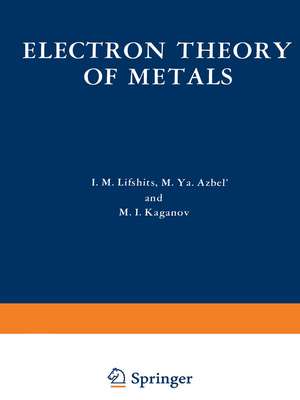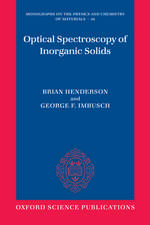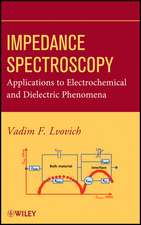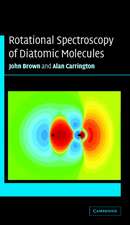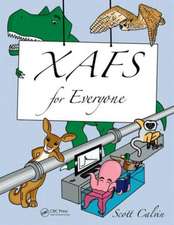Electron Theory of Metals
Editat de I. M. Lifshitsen Limba Engleză Paperback – mar 2012
Preț: 403.15 lei
Nou
Puncte Express: 605
Preț estimativ în valută:
77.14€ • 84.06$ • 65.00£
77.14€ • 84.06$ • 65.00£
Carte tipărită la comandă
Livrare economică 23 aprilie-07 mai
Preluare comenzi: 021 569.72.76
Specificații
ISBN-13: 9781461585602
ISBN-10: 1461585600
Pagini: 340
Ilustrații: X, 326 p.
Dimensiuni: 210 x 279 x 18 mm
Greutate: 0.77 kg
Ediția:Softcover reprint of the original 1st ed. 1973
Editura: Springer Us
Colecția Springer
Locul publicării:New York, NY, United States
ISBN-10: 1461585600
Pagini: 340
Ilustrații: X, 326 p.
Dimensiuni: 210 x 279 x 18 mm
Greutate: 0.77 kg
Ediția:Softcover reprint of the original 1st ed. 1973
Editura: Springer Us
Colecția Springer
Locul publicării:New York, NY, United States
Public țintă
ResearchCuprins
1. Simple Model.- I Classical and Quantum Mechanics of Conduction Electrons.- 2. Geometry of Constant-Energy Surfaces.- 3. Density of States per Unit Energy Interval.- 4. Classical Mechanics of a Particle with an Arbitrary Dispersion Law.- 5. Motion of Conduction Electrons in Nonuniform Fields.- 6. Collisions of Quasiparticles. Scattering Processes.- 7. Quasiclassical Energy Levels.- 8. Quantum Mechanics of an Electron with an Arbitrary Dispersion Law.- 9. Quantum Theory of the Scattering of Electrons with an Arbitrary Dispersion Law.- 10. Magnetic Breakthrough.- II Statistical Mechanics of Conduction Electrons.- 11. Criterion Separating Metals from Dielectrics. Fermi Energy. Fermi Surface. Number of Electrons.- 12. Thermodynamics of Conduction Electrons.- 13. Anomalous Electron Properties of Metals at High Pressures.- 14. Paramagnetism and Diamagnetism in Weak Magnetic Fields.- 15. de Haas-van Alphen Effect in Strong Magnetic Fields.- 16. de Haas-van Alphen Effect and the Theory of Fermi Liquids.- 17. Determination of the Electron Energy Spectrum from the de Haas-van Alphen Effect.- 18. General Theory of Oscillatory Effects.- 19. Strong Magnetism of Conduction Electrons. Anomalies of Thermodynamic Properties in Strong Magnetic Fields.- 20. Domains and Periodic Structures in Magnetic Fields.- 21. Theory of Diamagnetic Phase Transitions.- 22. Emission Properties of Metals.- III Transport Properties of Electrons in Metals.- 23. Boltzmann’s Transport Equation.- 24. Electrical Conductivity. Ohm’s Law.- 25. Thermal Conductivity. Wiedemann-Franz Law. Thermoelectric Effects.- 26. Galvanomagnetic Effects (Introduction).- 27. Galvanomagnetic Effects in Strong Fields (Closed Trajectories).- 28. Galvanomagnetic Effects in Strong Fields (Open Trajectories).- 29. Theory of theStatic Skin Effect.- 30. Thermal Conductivity and Thermoelectric Effects in Strong Magnetic Fields.- 31. Quantum Oscillations of the Resistivity of Metals (Shubnikov-de Haas Effect).- IV High-Frequency Properties of Metals.- 32. General Relationships Governing the Behavior of Metals in High-Frequency Fields.- 33. Anomalous Skin Effect in the Absence of a Static Magnetic Field.- 34. Anomalous Skin Effect in a Static Magnetic Field.- 35. Physical Aspects of Cyclotron Resonance.- 36. Theory of Cyclotron Resonance.- 37. Investigation of Surface Impedance under Cyclotron Resonance Conditions.- 38. Damping of a High-Frequency Field in a Metal.- 39. Free Oscillations and Weakly Damped Waves in Metals.- 40. High-Frequency Fermi-Liquid Effects in Metals.- 41. Surface Skin Effect and Resonance at Very Low Frequencies.- 42. Quantum Theory of High-Frequency Phenomena.- 43. Quantum Cyclotron Resonance.- 44. Paramagnetic Resonance in Metals.- 45. Combined Resonance.- 46. Impedance Oscillations in Weak Magnetic Fields.- 47. Infrared Optics.- 48. Determination of Electron Energy Spectra of Metals.- Appendix I Quantum Oscillations of the Resistance of Metals at Low Frequencies.- Appendix II Role of Electrons in the Propagation and the Absorption of Sound in Metals.- Appendix III Topology of Fermi Surfaces of Metals (Summary Table).- Literature Cited.
